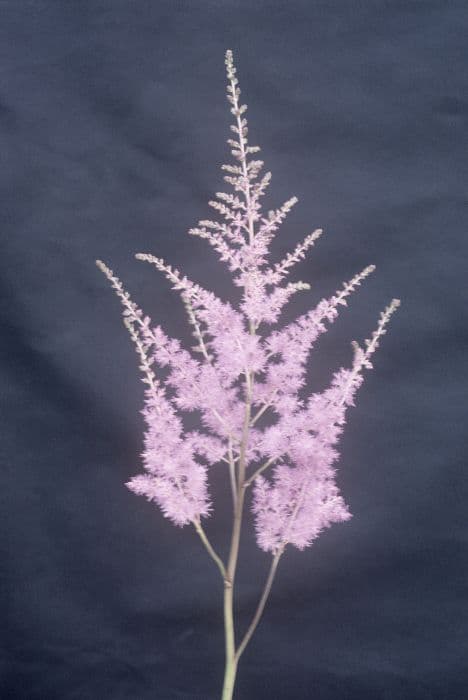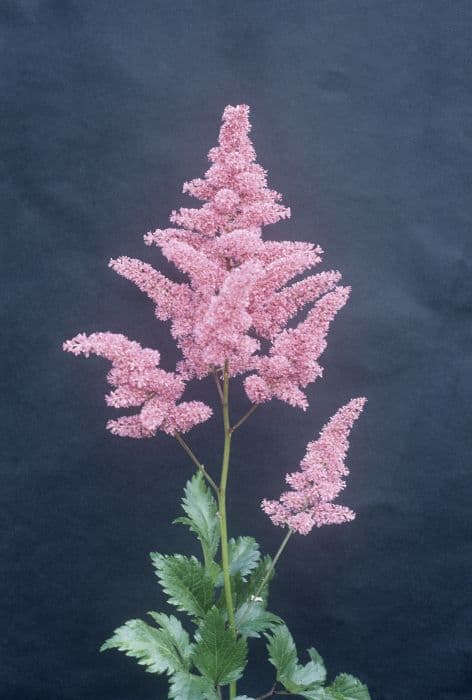Coral Bells Heuchera 'Caramel' (PBR)

ABOUT
Heuchera 'Caramel', also commonly known as Coral Bells, is a striking perennial that boasts a lush mound of robust, lobed foliage. Its leaves are the standout feature, with a unique hue that gives 'Caramel' its name – they exhibit a rich caramel color with hints of gold to apricot, especially vibrant when the new leaves emerge in the spring. Over time, these leaves can mature to more muted earthy tones, adding depth and warmth to the plant's overall appearance. In contrast to the warm-toned leaves, delicate bell-shaped flowers appear on slender stems that rise gracefully above the foliage in summer. These tiny flowers are typically creamy white or a soft pink, creating a subtle yet attractive complement to the colorful leaves. The contrast between the foliage and the flowers adds to the ornamental appeal of Coral Bells 'Caramel', making it a favorite for gardeners who appreciate foliage as much as blooms.
About this plant
 Names
NamesFamily
Saxifragaceae.
Synonyms
Coral Bells, Alumroot.
Common names
Heuchera 'Caramel' (PBR)
 Toxicity
ToxicityTo humans
Heuchera 'Caramel', commonly known as Coral Bells, is not considered toxic to humans. It does not commonly cause poisoning or adverse reactions if ingested. However, as with any plant material, individual allergies or intolerances are possible, and it is generally not advisable to ingest parts of ornamental plants due to the potential for gastrointestinal discomfort or other non-toxic reactions.
To pets
Coral Bells is not known to be toxic to pets either. It is generally considered safe for dogs, cats, and other domestic animals. Nevertheless, it is always prudent to prevent pets from consuming plants, as they might cause mild gastrointestinal upset due to the ingestion of non-food items, rather than from toxicity.
 Characteristics
CharacteristicsLife cycle
Perennials
Foliage type
Evergreen
Color of leaves
Caramel
Flower color
Pink
Height
1 foot 6 inches (45 cm)
Spread
1 foot 6 inches (45 cm)
Plant type
Herb
Hardiness zones
4
Native area
North America
Benefits
 General Benefits
General Benefits- Attractive Foliage: Heuchera 'Caramel' offers eye-catching caramel-colored leaves that can add unique hues to a garden palette.
- Long-Lasting: The plant is known for its durability and long life span, providing persistent garden interest.
- Shade Tolerance: Coral Bells thrive in shady conditions, making them ideal for parts of the garden where other plants might struggle.
- Drought Resistance: Once established, they can tolerate periods of drought, making them suitable for xeriscaping.
- Easy Maintenance: Coral Bells require minimal care, making them a low-maintenance option for busy gardeners.
- Seasonal Interest: With their evergreen or semi-evergreen foliage, they provide year-round interest in appropriate climates.
- Good Companion Plant: Their mounding habit makes them excellent for underplanting and companion planting with taller perennials and shrubs.
- Non-Invasive: Coral Bells are non-aggressive and do not tend to overtake areas, allowing for controlled garden designs.
- Attracts Pollinators: The small bell-shaped flowers can attract butterflies and other pollinators to the garden.
- Versatile Landscaping: Suitable for borders, rock gardens, container gardening, and as ground cover, adding versatility to landscaping projects.
- Frost Hardy: Heuchera 'Caramel' is frost hardy, which means it can withstand cold winter temperatures without significant damage.
 Medical Properties
Medical PropertiesThis plant is not used for medical purposes.
 Air-purifying Qualities
Air-purifying QualitiesThis plant is not specifically known for air purifying qualities.
 Other Uses
Other Uses- Photography Background: Heuchera 'Caramel', with its uniquely colored leaves, can serve as an excellent backdrop for close-up photography, enhancing the visual appeal of the subject in front.
- Leaf Impressions: The leaves of the Heuchera 'Caramel' can be used to make natural leaf impressions in clay or plaster, capturing their vein patterns in art projects.
- Culinary Garnish: Although not widely known for culinary use, the leaves of Heuchera 'Caramel' can be used as a decorative garnish for special dishes due to their vibrant color.
- Education: Heuchera 'Caramel' serves as an ideal specimen for educational purposes, such as studying plant adaptation and leaf color variation in horticultural courses.
- Fairy Gardens: The miniature and whimsical appearance of Heuchera 'Caramel' makes it an excellent addition to fairy gardens or other miniature landscaping projects.
- Themed Events: Heuchera 'Caramel' can be incorporated into event decorations for autumn or caramel-themed parties, enhancing the seasonal or color-themed ambiance.
- Color Inspiration: The unique tones of the plant can inspire artists and designers seeking new color palettes for their creations.
- Eco-friendly Confetti: Dried leaves of the Heuchera 'Caramel' can be used as an eco-friendly alternative to traditional confetti at celebrations.
- Pressed Flower Art: The leaves of Heuchera 'Caramel' can be pressed and used in crafting, such as creating bookmarks, cards, or wall art.
- Natural Potpourri: When dried, the leaves of Heuchera 'Caramel' could potentially be added to a potpourri mix, contributing to the visual appeal, though they may not emit a strong fragrance.
Interesting Facts
 Feng Shui
Feng ShuiCoral Bells is not used in Feng Shui practice.
 Zodiac Sign Compitability
Zodiac Sign CompitabilityCoral Bells is not used in astrology practice.
 Plant Symbolism
Plant Symbolism- Durability: Heuchera, commonly known as Coral Bells, is known for its hardiness and ability to thrive in various conditions, symbolizing resilience and long-lasting life.
- Attractiveness: With its striking caramel-colored foliage, Coral Bells represent allure and aesthetic beauty, highlighting nature's artistic side.
- Variety: The wide range of colors available in Heuchera varieties can symbolize diversity and inclusivity, celebrating different forms of beauty.
 Water
WaterCaramel Coral Bells should be watered deeply once or twice a week, depending on the climate and soil moisture levels. It's important to allow the soil to dry out slightly between waterings to prevent root rot. When watering, provide about one gallon of water per plant, ensuring that the water reaches the root zone. During particularly hot or dry periods, you may need to increase the frequency, but always check the soil moisture first. Overhead watering is discouraged as wet foliage can lead to fungal diseases; instead, water at the base of the plant.
 Light
LightCaramel Coral Bells thrive best in partial shade, ideally receiving morning sunlight and afternoon shade to protect them from the harsh midday sun. They can also grow in full shade, which makes them suitable for woodland gardens or as underplanting for taller shrubs. Avoid placing them in full sunlight, as this can cause the leaves to scorch.
 Temperature
TemperatureCaramel Coral Bells are hardy and can tolerate a wide range of temperatures, but perform best between 60°F and 70°F. They can survive minimum temperatures down to -25°F, making them suitable for gardening in cooler climates. However, maintaining an ideal growing environment without extreme heat or cold will promote healthier growth.
 Pruning
PruningPruning Caramel Coral Bells is primarily done to remove any faded or damaged leaves and to encourage a tidy growth habit. Prune in the spring to remove any winter-damaged foliage and to shape the plant. They can also be deadheaded after flowering to encourage a second bloom. Pruning is typically required once a year, but performing a light trim as needed can keep the plant looking neat.
 Cleaning
CleaningAs needed
 Soil
SoilCoral bells thrive in well-draining soil rich in organic matter with a pH of around 6.0 to 7.0. A mix containing one-part garden soil, one-part peat moss or compost, and one-part perlite or coarse sand is ideal. Mulching will help maintain moisture and temperature.
 Repotting
RepottingCoral bells typically require repotting every 3 to 4 years or when the root system outgrows the pot. Spring is the best time to repot to minimize stress on the plant.
 Humidity & Misting
Humidity & MistingCoral bells prefer average humidity levels. They are relatively adaptable but avoid conditions that are too dry; a range of 40-50% humidity is suitable for their growth.
 Suitable locations
Suitable locationsIndoor
Provide bright, indirect light, and keep the soil moist.
Outdoor
Plant in partial shade with moist, well-draining soil.
Hardiness zone
4-9 USDA
 Life cycle
Life cycleThe Coral Bells 'Caramel' begins its life cycle with seed germination, occurring when the conditions are moist and warm. The emerging seedlings develop a rosette of leaves as they enter the vegetative stage, focusing on root and foliage growth. Once mature, typically in the spring or early summer, the plant produces tall flower stalks with small bell-shaped flowers, indicating the reproductive stage. After pollination, often by insects, seeds form and are eventually dispersed, starting a new generation. In the autumn, the plant's foliage may die back, especially in colder climates, entering a period of dormancy. With the return of favorable conditions in spring, the Coral Bells 'Caramel' will break dormancy, resume growth, and complete the cycle once again.
 Propogation
PropogationPropogation time
Spring-Early Summer
The Heuchera 'Caramel', commonly known as Coral Bells, is typically propagated by division, which is best done in the spring or fall. To propagate by division, carefully dig up an established clump and gently separate it into smaller clumps, each with several shoots and a portion of the root system. These divisions should then be replanted at the same soil level they were originally growing at, ensuring that they are spaced about 12 to 18 inches (roughly 30 to 45 cm) apart to allow for growth. Adequate watering after replanting is crucial for the establishment of the new plants. This method is favored for its simplicity and effectiveness in producing exact clones of the parent plant.









